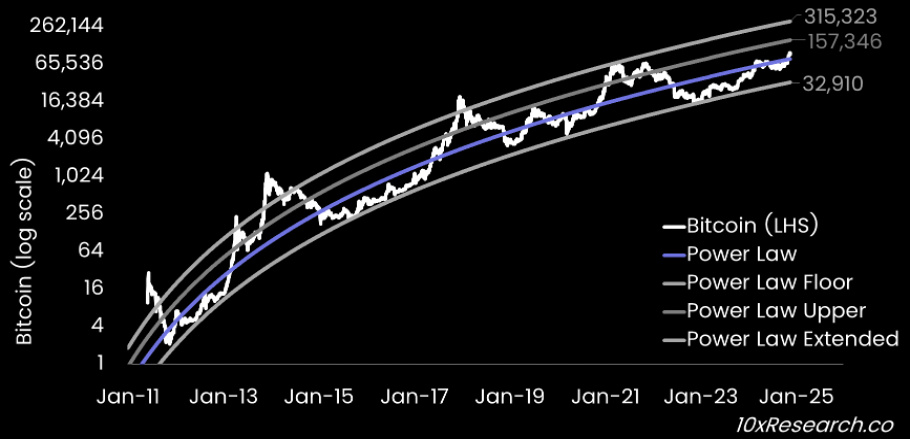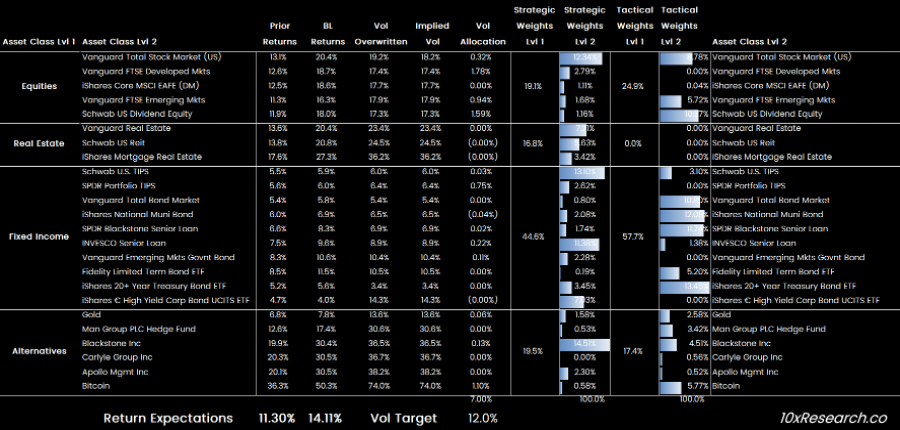Three Questions Reveal Your Ideal Bitcoin Allocation
By answering three key questions on return expectations and target portfolio volatility, multi-asset investors can evaluate bitcoin’s suitability for their portfolios and determine its optimal allocation based on their unique goals.
Contrary to popular belief, bitcoin’s price is primarily driven by demand, not its (mining) supply. Each of bitcoin’s five bull markets has been propelled by innovations in how investors access it — ranging from the creation of early spot exchanges to the introduction of futures, uncollateralized borrowing, spot bitcoin ETFs, and now options on these ETFs. This evolution underscores bitcoin’s deepening integration into traditional financial markets, a trend accelerated by regulatory approvals from U.S. agencies like the CFTC and SEC, which have progressively legitimized bitcoin-based financial products.
The 2017 decision to retain Bitcoin’s 1-megabyte (MB) block size marked the resolution of a long-standing debate within the Bitcoin community on scaling the network. Originally implemented to manage congestion and uphold decentralization, the block size limit became a defining feature. By prioritizing decentralization over higher transaction throughput, this decision cemented bitcoin’s role as “digital gold.”
This framework helps traditional finance investors understand bitcoin’s role as digital gold, a risk mitigation tool or an inflation hedge, and offers insights into its valuation potential. While bitcoin is unlikely to disrupt jewelry ($8 trillion), it could capture portions of the $10 trillion addressable market, including private investments ($4 trillion), central bank reserves ($3.1 trillion), and industrial use ($2.7 trillion). With bitcoin’s current market cap at $2 trillion, this suggests a potential 5x growth as it solidifies its position as digital gold.
Exhibit 1: Bitcoin (log chart) power law curves

The fundamental distinction is Bitcoin’s nature as a technology with strong network effects, which gold inherently lacks. Network technologies often follow an “S-curve” adoption model, with mass adoption accelerating once the critical 8% threshold is surpassed.
With a market capitalization of $2 trillion, bitcoin represents just 0.58% of the nearly $400 trillion global financial asset portfolio. This share is poised to increase as asset managers, pension funds, and sovereign wealth funds progressively integrate bitcoin into their investment strategies.
To strategically integrate bitcoin into a forward-looking, Markowitz-optimized portfolio, investors must address three key questions:
How is bitcoin expected to perform relative to equities?
How will equities perform relative to bonds?
What is the target portfolio’s overall volatility?
These insights drive more informed allocation decisions within multi-asset portfolios.
Exhibit 2: Optimal multi-asset allocation based on our expected return/risk parameters

For example, if bitcoin is projected to outperform U.S. stocks by +30% in 2025, U.S. stocks outperform U.S. bonds by +15%, and the portfolio targets a 12% volatility level, the following adjustments occur: equities increase from 19.1% to 24.9%, real estate drops from 16.8% to 0%, fixed income rises from 44.6% to 57.7%, and alternatives (including private equity, hedge funds, gold, and bitcoin) decrease from 19.5% to 17.4%. Notably, bitcoin’s allocation jumps significantly — from 0.58% (based on its current market share of the $400 trillion global financial asset pool) to 5.77%.
This adjustment boosts the portfolio’s expected return from 11.3% to 14.1%, leveraging a volatility-targeted Black-Litterman-optimized framework, which is an analytical tool to optimize asset allocation within an investor’s risk tolerance and market views. By answering these key questions and applying this approach, investors can determine their ideal bitcoin allocation.






